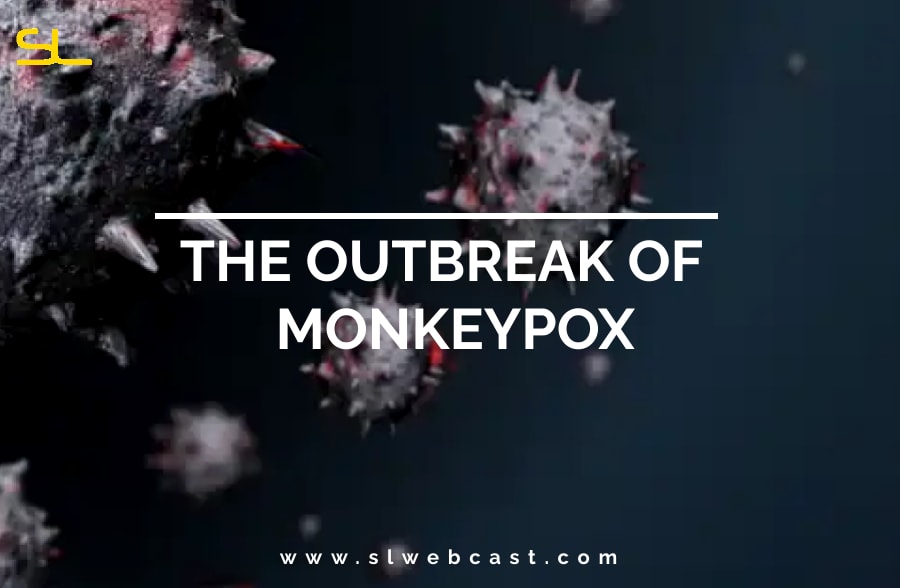Monkeypox virus virally occurring now in several regions has brought out attention over besides Covid-19 virus. Concerns are rising about will this Monkeypox virus brings back a pandemic
What is the Monkeypox virus?
Currently, scientists are researching on alert about the globally spreading virus called Monkeypox. This Monkeypox virus (MPV or MPXV) is a disease similar to smallpox called variola (VARV). This virus is a member of the orthopoxvirus family, which also includes cowpox (CPX), vaccina (VACV) and Monkeypox (MPV or MPXV). Monkeypox virus is a double-stranded DNA zoonotic virus that causes Monkeypox in humans and other animals too. This virus belongs to the genus called Orthopoxvirus in the family Poxviridae. Monkeypox is a viral zoonotic disease that occurs primarily in tropical rainforest areas of Central and West
Africa and is now occasionally exported to another region. Monkeypox isn’t a new disease. Human Monkeypox was first identified in humans in 1970 in the Democratic Republic of the Congo (DRC) in a 9-year-old boy isolated in a region where smallpox had been eliminated in 1968. Since then, most cases have been reported from rural, rainforest regions of the Congo Basin, particularly in the Democratic Republic of the Congo (DRC) and human cases have increasingly been reported from across Central and West Africa. (WHO).
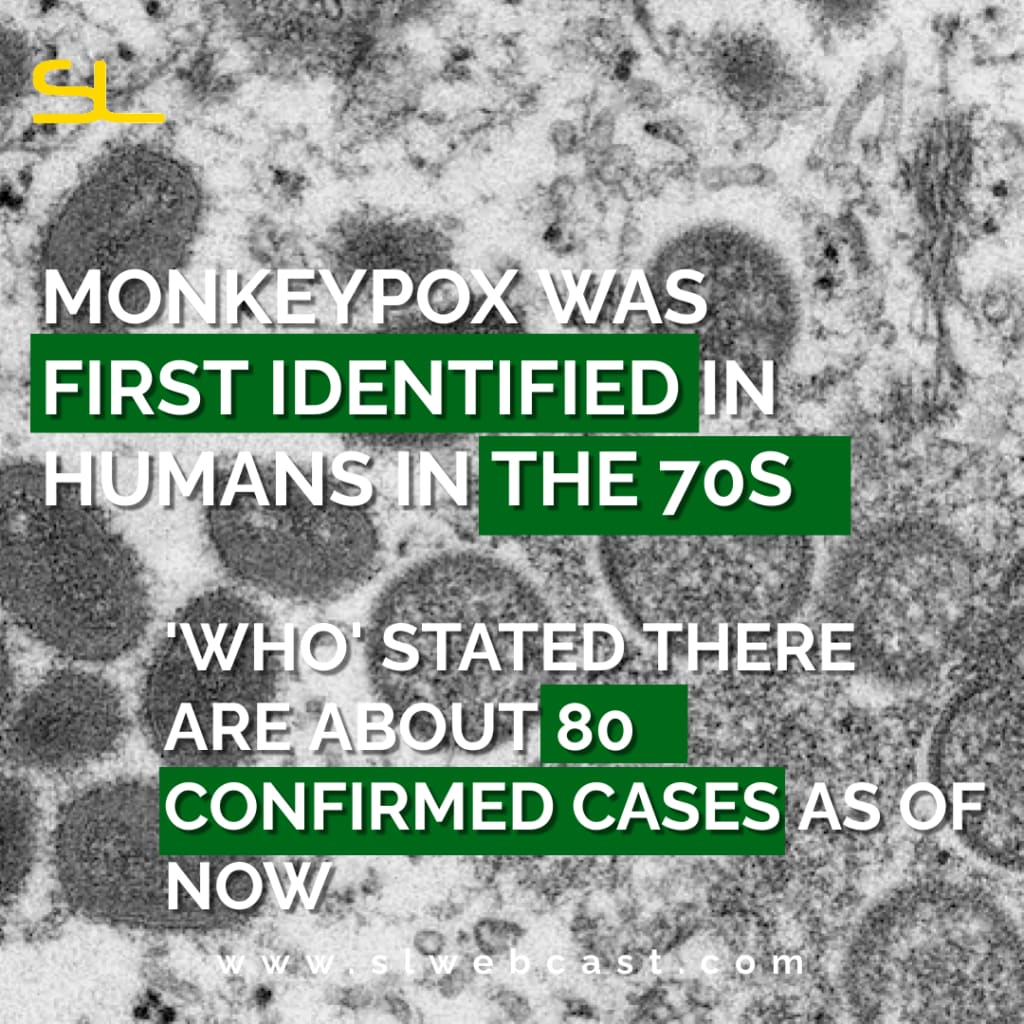
2022 Monkeypox outbreaks
The 2022 Monkeypox virus outbreak represents the first incidence of widespread community transmission outside of Africa. The World Health Organization is convening an emergency meeting with experts about the spread of the virus which is normally found in remote parts of central and west Africa and stated that the recent Monkeypox outbreaks are unusual because they are occurring in countries where the virus is not endemic. The CDC confirmed a Monkeypox case in Massachusetts on Wednesday. The person had recently travelled to Canada using private transportation. New York City is investigating a possible Monkeypox case, according to a health department statement Thursday. Accordingly, a list of countries has been stated infected by this disease. Which began in the United Kingdom on 18th May 2022, with multiple cases detected in Europe, North America, Australia and Israel. As per a recent statement released on May 20, WHO stated that there are about 80 confirmed Monkeypox cases so far, and 50 pending investigations. It also added that more cases are likely to be reported as surveillance expands.
Virus symptoms
This virus can appear similar to chickenpox. Monkeypox is predicted as an infectious disease caused by the Monkeypox. The virus can occur in certain animals, including humans too. After infection, there is an incubation period which lasts on average 7-14 days. The development of initial symptoms of this virus has been reported as begins with fever, headache including flu, muscle pains, feeling fatigued, a general feeling of discomfort, and exhaustion. The pox begins as small flat spots, before becoming small bumps which then fill with at first clear fluid and then pus, which subsequently burst and scab over. It looks identical to the rash of smallpox that forms blisters and crusts over. As researched the rash typically develops on the face first before spreading to other parts of the body and continuing to appear over the body. The time from exposure to onset of symptoms is around 10 days. Researchers imply that an affected person may remain unwell for two to four weeks. Severe cases can occur. In recent times, the case fatality ratio has been around 3-6% as WHO stated.
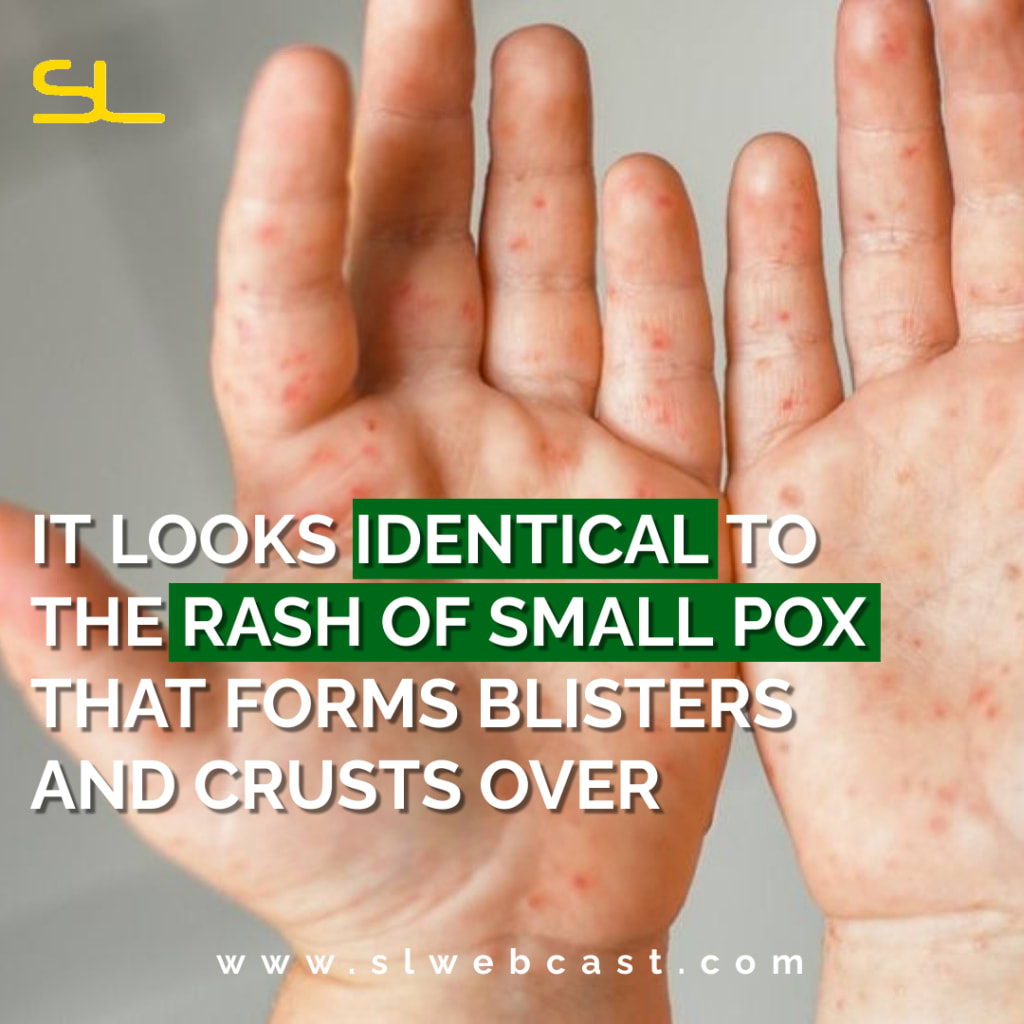
Virus Transmission
The Monkeypox virus affects both humans and animals. It is stated that the Monkeypox virus is transmitted Human-to-human transmission is thought to occur primarily through large respiratory droplets and contaminated materials such as bedding touching clothing, bedding or towels used by someone with the Monkeypox rash and touching Monkeypox skin blisters or scabs. Monkeypox can be spread when someone is in close contact with an infected person. This virus can enter the body through broken skin, or through the eyes, nose or mouth by coughs or sneezes of a person with the Monkeypox rash. While close physical contact with a person is a well-known risk factor for transmission this virus has not previously been described as a sexually transmitted infection, but it can be passed on by direct contact during sex. They are being asked to contact their local sexual health service if they have concerns. Monkeypox infection has been observed in a wide variety of mammals, including non-human primates, rodents, and squirrels. Animal-to-human transmission may occur via a bite or scratch, bush meat preparation, direct contact with body fluids of infected animals or lesion material, or indirect contact with lesion material, such as through contaminated bedding. However, this Monkeypox virus can be more severe, especially in young children, pregnant women, and people who have weakened immune systems.
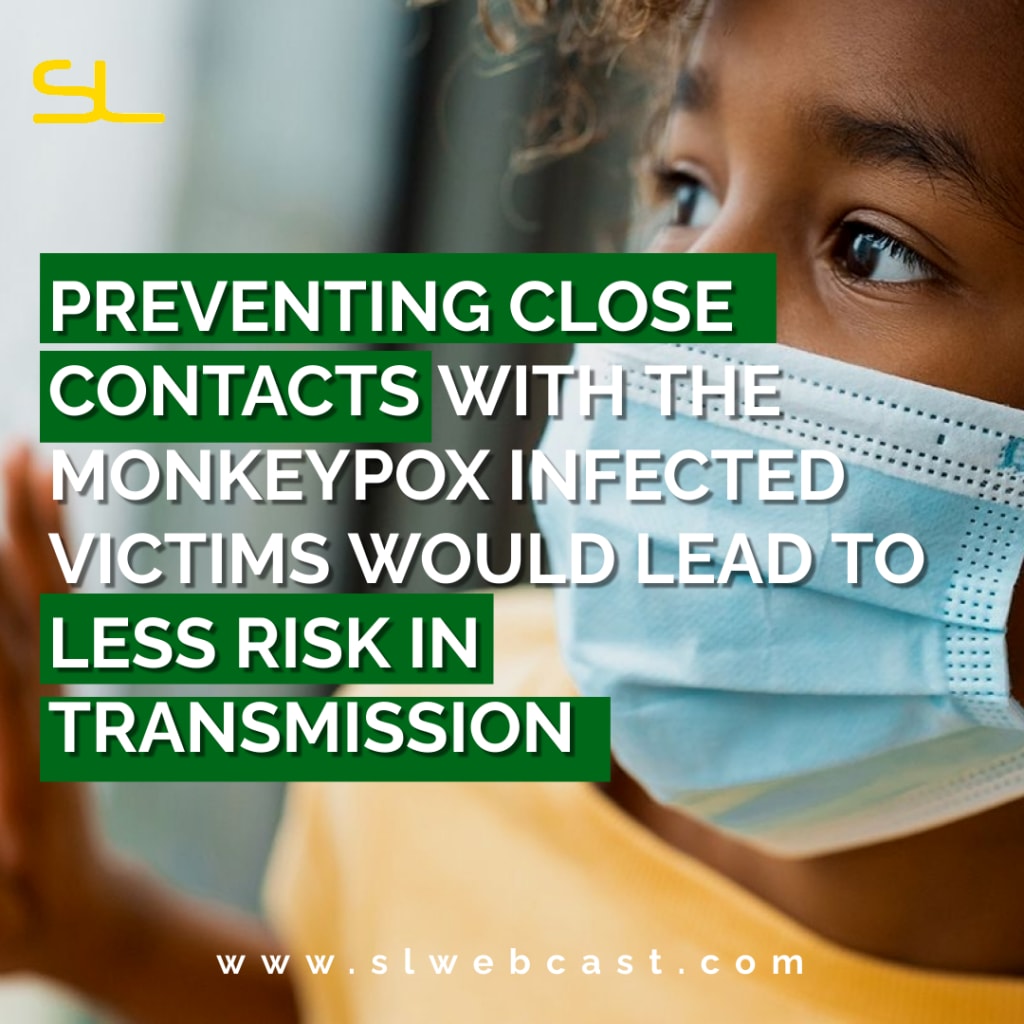
Precautions
To prevent infection from the Monkeypox virus raising awareness and precautions among people would be the best strategy to take control of this disease. Preventing close contact with the Monkeypox infected victims would lead to less risk of transmitting human to human. Vaccines used during the smallpox eradication programme also provided protection against Monkeypox. Newer vaccines have been developed of which one has been approved for the prevention of Monkeypox, WHO states if possible the persons previously vaccinated against smallpox should be appointed to take care of the patients for less effect. Next Animal to human transmission is also a risk factor. To reduce the zoonotic transmission captive animals that are potentially infected with Monkeypox should be isolated from other animals and contact with human-like petting and placed into immediate quarantine. Any animals that might have come into contact with an infected animal should be quarantined, handled with standard precautions and observed for Monkeypox symptoms for 30 days.
As main research, it has been stated that most mammals are being infected so it’s better to prevent petting and close contact. Unprotected contact with wild animals, especially those that are sick or dead, including their meat, blood and other parts must be avoided. Additionally, all foods containing animal meat or parts must be thoroughly cooked before eating The CDC recommends that healthcare providers don a full set of personal protective equipment (PPE) before caring for an infected person. This includes a gown, mask, goggles, and a filtering disposable respirator (such as an N95). An infected person should be isolated in preferably a negative air pressure room or at least a private exam room to keep others from possible.
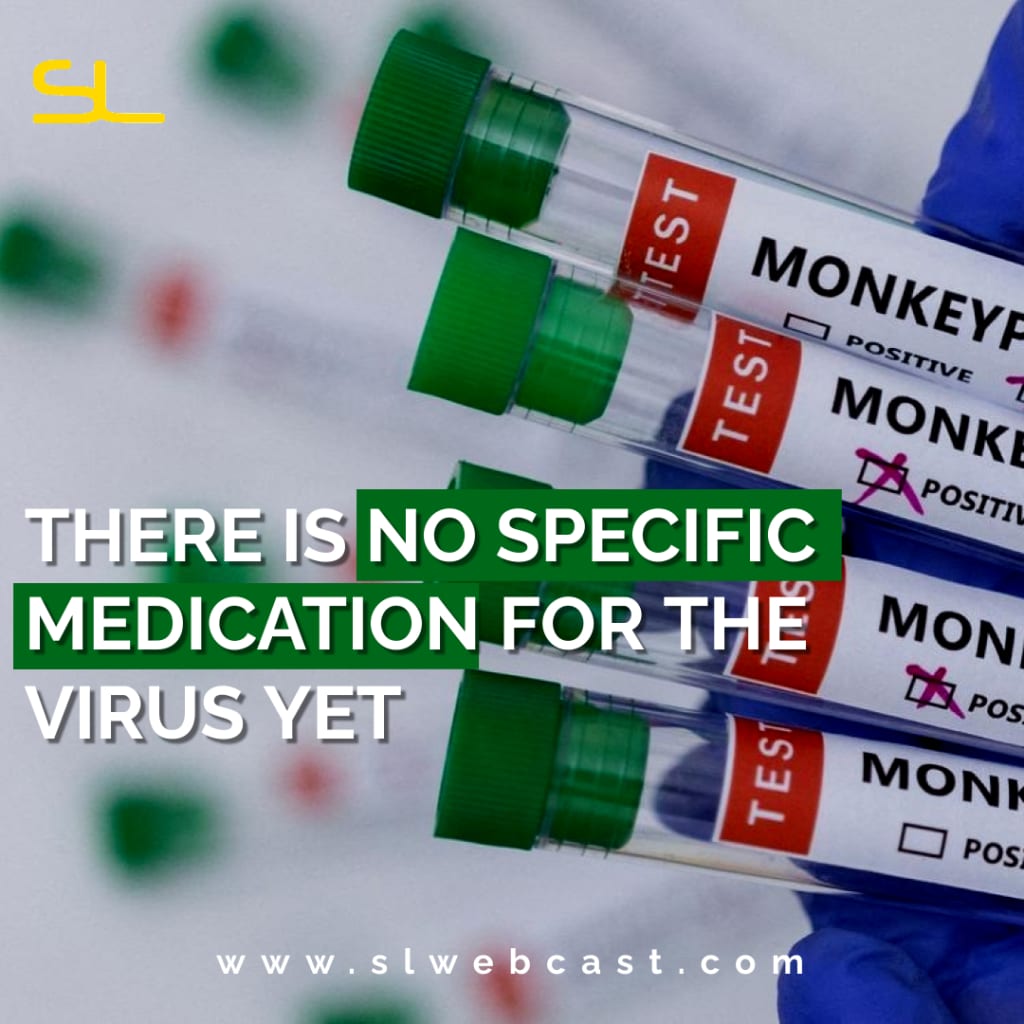
Treatment
Yet there are no specific medications for the Monkeypox virus. Historically, vaccination against smallpox had been shown to be protective against Monkeypox. While one vaccine (MVA-BN) and one specific treatment (tecovirimat) were approved for Monkeypox, in 2019 and 2022 respectively. Currently, there is no proven, safe treatment for Monkeypox virus infection. For purpose of controlling the Monkeypox virus, vaccination against smallpox has shown to be 85 per cent effective in preventing Monkeypox, according to the World Health Organization (WHO)and The WHO says Monkeypox patients should be given fluids and food “to maintain adequate nutritional status.”


